The Latest from TechCrunch |  |
| CEO Jason Kilar On The State Of Hulu Posted: 28 Apr 2009 08:59 AM PDT Hulu CEO Jason Kilar sits down with Sarah Lacy on Yahoo Tech Ticker. The first segment is up now, more will follow. In this first segment, in response to Lacy’s question about why Hulu removed its content from the popular Boxee service, he talks about his need to juggle the needs of his three customers - networks, viewers and advertisers. The networks must be kept happy to make sure Hulu is around for the long term, he says, and this move was made to keep the networks happy. Kilar also addressed rumors of NBC pulling out of the joint venture. More segments coming up. Crunch Network: CrunchGear drool over the sexiest new gadgets and hardware. |
| Keep Track of Mobile Visitors To Your Website With PercentMobile (Invites) Posted: 28 Apr 2009 08:27 AM PDT
As more mobile phones become full-fledged Web-browsing devices, a small but fast-growing segment of all visitors to any given Websites will be mobile. But with so many different mobile phones and browsers, it is difficult to figure out where most of that mobile traffic is coming from. A new mobile Website tracking service called PercentMobile lets you track mobile visitors by device, cell phone operator, country, and more. All you do is insert one line of pixel-based code into the header of your Website and it does the rest. All mobile browsers can read the pixel code, unlike the Javascript required by Google Analytics, for instance. PercentMobile is in private beta, but we have 500 invites for TechCrunch readers. Use the code freecoffee at signup. PercentMobile is free, but the high-level data in the reports become public. (They can be made privaet by request). The service is built on top of TigTags, an enterprise mobile analytics platform that starts at $1,000 a month. PercentMobile is basically a lead generator for that service. To get a sense of some of the data you would see, check out this report for FourSquare, the mobile social network that MG is in love with. Not surprisingly, 76.5 percent of all of its traffic is mobile. Although it comes as an iPhone app, you can also access it via a mobile browser. The most popular device accessing it that way is not the iPhone (since most people use the app), but rather the Blackberry (9.9%), followed by HTC’s G1 Android phone (9.6%), followed by two more Blackberry models (8.9% and 7.4%), and then the iPhone (7.3%), and then another Blackberry (7.1%). Guess which platform FourSquare is going to develop an app for next? Yup, the Blackberry. Every Website should know how much of its traffic comes from mobile, and from what devices and geographies.
Crunch Network: CrunchBoard because it’s time for you to find a new Job2.0 |
| Domain Monetizer Parked.com Picks Up WhyPark Posted: 28 Apr 2009 08:05 AM PDT
WhyPark essentially allows domain owners to trade in the usual advertisement-filled landing pages that are so common with parking providers for content-driven websites that are supposed to draw organic traffic from search engines (scary line alert: “populate your sites with fresh content daily, without lifting a finger”). WhyPark also allowed users to monetize their sites in a variety of ways, a service that directly competed with Parked.com’s core business. That means that both companies were in fact rivals to a degree, and that the acquisition means there’s good synergy between them, but at the same time it’s worth noting that Parked.com has always boasted about its exclusive focus on monetizing domain names and steering clear from all other associated services. This obviously is no longer the case now, and with WhyPark becoming part of the 10-year old Parked.com, the combined entity will continue to compete with Sedo (the juggernaut in this space) and the likes. As Domain Name Wire points out, WhyPark as a result of the acquisition is moving to a free model instead of charging new users a $99 set-up fee like before. Crunch Network: CrunchGear drool over the sexiest new gadgets and hardware. |
| iPhone Owners Don’t Use Their Devices For Work? Yeah, Right. Posted: 28 Apr 2009 06:11 AM PDT
The NY Times reporter didn’t detail where these stats are coming from and how Compete reached their conclusions exactly apart from saying ’smartphone users were surveyed’, but I consider the article’s headline (”Apple iPhone Owners Don't Use It For Work”) to be quite misleading either way you spin it. If you have a Web-capable phone, you are going to use it for both work and play. Or does every person with a job who owns an iPhone also keep a Blackberry handy to whip out for work-related tasks (besides Erick)? Having an iPhone myself, I can imagine that a lot of people are indeed using their Apple phones for personal reasons like entertainment (games, videos, etc.) a lot more than they do with other smartphones, but that is because the user experience on the latter devices generally sucks compared to the iPhone anyway. There’s a whole lot of well-known reasons for that besides the technical or design shortcomings: either third-party developers don’t find competing platforms compelling enough to create applications for them, or they do but the quality bar is set too low, and even then there’s no decent, central marketplace to download or buy apps from. But let’s not digress from the main talking point. The Compete survey reportedly found that 73% of iPhone owners used their mobile devices primarily for personal reasons, but what isn’t detailed is how much time in total they are using their phones - which I imagine is a whole lot more than on other smartphones - and how much more efficient it makes them when they actually do use it for work. For reference, a recent AdMobs Mobile Metrics report pointed out that nearly 50% of all smartphone web traffic in the U.S. comes from iPhone devices. I’d also like to point to a recent study by JD Power and Associates which ranked iPhone highest in customer satisfaction, not for everyday consumers (those the device was initially targeted at, I might add), but for “business wireless smartphone users.” I’d also argue that the time I spend using my iPhone for professional reasons may be much less than I used to spend battling the Windows Mobile OS on my previous smartphone (an HTC), but that it increased my productivity when I’m on the go five-fold easily, and isn’t that what really matters? This tidbit from the article bothered me as well:
Undoubtedly true, but which mobile worker hasn’t at one point used his smartphone for directions or restaurant recommendations directly related to his or her job? How can Compete possibly claim these services are being used for personal use only? Let’s call it like it is: while not perfect, the iPhone is a joy to use from an individual standpoint, whether it’s for business or personal reasons, and all the other device manufacterers are (or should be) playing catch-up when it comes to physical design, UI and general ease-of-use of navigation. I use my phone a whole lot more than I used to in the past, and even I would answer a survey question asking for my behavior that I use it primarily for personal reasons, but does that in any way imply that I don’t use it for work? The answer is a big fat no, quite the contrary, thank you. Crunch Network: MobileCrunch Mobile Gadgets and Applications, Delivered Daily. |
| Zoho Now Fully Integrated With Mobile Devices Posted: 28 Apr 2009 05:55 AM PDT
Zoho, the creators of a web-based software suite made up of document, project and invoicing management tools, has launched the availability of its comprehensive webtop productivity products on mobile devices. Zoho previously had basic mobile support for its applications on iPhone and some limited capability on Windows Mobile but now fully integrates Zoho Applications with several mobile devices. Zoho Mail, Calendar, Writer, Sheet, Show & Creator are now available for the iPhone, Android, BlackBerry, WindowsMobile and Symbian devices. As we’ve written in the past, Zoho is an innovative document management tool, and includes easy access thanks to support for Google and Yahoo IDs and the group sharing across different apps feature. While Zoho has added useful features to its software suite, Zoho is going to have to fight an uphill battle to keep consumers from going towards web-based applications offered by companies with a vast reach (Google, Microsoft, Adobe, etc.). Here’s a slideshow on Zoho’s mobile integration: Crunch Network: CrunchGear drool over the sexiest new gadgets and hardware. |
| Mint Turns Personal Finance Into A Game. It’s Not As Bad As It Sounds Posted: 28 Apr 2009 05:50 AM PDT Mint, the popular personal finance site that won 2007’s TechCrunch40, is launching a new feature called “Financial Fitness” which, strange as it may sound, adds an element of gaming to the service. Yes, it may sound like a bizarre combination at first - personal finance and fun aren’t exactly two things that go hand in hand. But it’s also a smart move on Mint’s part, as it looks to turn a mundane activity into something a bit more tolerable while increase Mint’s engagement in the process. Mint is running the new feature in a private beta for a few weeks, and the first 500 TechCrunch readers to Email techcrunch-getfit@mint.com with the Email address they use on Mint.com will gain access. The game itself is fairly simple. It outlines five main principles that users should focus on on the road to financial fitness, including ’spend less than you earn’, ‘manage credit and debt wisely’, and so on. Each of these core principles has a number of tasks associated with it, like ‘Avoid Bank Fees’ and ‘Come in under budget’. As you complete tasks, you are rewarded with points. And over time, you can earn merit badges for completing more difficult tasks, like being named as a “Financial Guru” for maintaining a 100% health status for an extended period of time.
Mint has studied the reward systems of games including Wii Fit, Warcraft, and Nike Fit as they built the game, looking to turn their virtual financial advisor into something a little more interesting than a wall of text. Of course, solving each of these tasks often involves the user interacting with a Mint feature or a referral to a partner site, which means Mint can effectively monetize the game as well. I’m sure many people will initially react to the game with skepticism, as it isn’t exactly the first thing you’d expect at a finance site. But seemingly pointless gaming elements can be useful nonetheless: one need only take a look at foursquare, a fairly new application that is quite addictive because of its game-like nature. That said, these kind of point systems tend to work best when there is some kind of social element involved - be it through a rivalry with friends or an aggregated leader board. As a financial site Mint doesn’t seem well suited for this kind of competition (it would be a bit strange to make fun of my friends for having a poorer financial health than me), but I think the gaming aspect should work nonetheless. 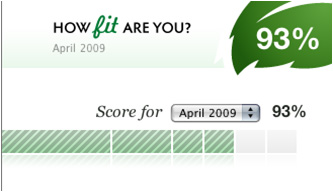 Crunch Network: MobileCrunch Mobile Gadgets and Applications, Delivered Daily. |
| Socialthing Starts Spreading Across 75 AOL Sites Posted: 28 Apr 2009 05:36 AM PDT
A couple weeks ago, I spotted the reincarnation of Socialthing on AOL’s country-music Website TheBoot and speculated that it would potentially be rolled out across AOL’s other MediaGlow properties as well. Today, a press release from AOL in my inbox confirms that MediaGlow “is in the process of deploying Socialthing across its network of more than 75 sites.” Socialthing started out as a Friendfeed competitor when AOL bought it last year. It never came out of private beta, but its lifestreaming service found its way into Bebo, the social network AOL purchased for $850 million. Now, with Socialthing for Websites, AOL is combining it with AIM to compete with Facebook Connect and Google Friend Connect. As I wrote in my last post, Socialthing for Websites offers a single sign-in for participating Websites. Right now it accepts your AIM or AOL username and password, but will soon add Bebo, Facebook, Gmail, Yahoo and OpenID using OAuth. In addition to single sign-in, Socialthing creates a toolbar along the bottom of a Website that brings both group chat and private AIM chat to the site in the form of pop-up boxes, as well as a content stream that shows the latest articles and comments on the site as well as your personal lifestream of activityies from other sites. As we saw from Facebook’s announcement yesterday to open up its own stream to developers so that they can create applications around the stream of constant updates from people’s social network, there is a battle going on to control the conversation. AOL is entering this battle with AIM and Socialthing. After it rolls Socialthing out across its own Websites, it will make Socialthing available to partner sites as well. And when it revamps AIM later this year, you can expect the Socialthing lifestream to be a big part of it.
Crunch Network: MobileCrunch Mobile Gadgets and Applications, Delivered Daily. |
| TrueCar Shifts Into Gear, Lets You Check If Your Neighbors Got That Mercedes At A Better Price Posted: 28 Apr 2009 04:57 AM PDT
In essence, the service allows car buyers to check if the price for their next car is on par with the price others have paid for the same vehicle in the past, hopefully bringing some transparency to the automotive retail industry. So how does it work? When a new car buyer visits the TrueCar website, they are asked to enter their zip code and all vehicle details down to the specific options. TrueCar then generates a complete Price Report with nifty graphs, displaying the full distribution of prices paid by other people for the exact same vehicle in a given market area. In addition, the web service calculates the actual dealer cost structure of a particular vehicle.
TrueCar claims it holds data for more than 25% of all new vehicles sold throughout the United States, which is quite impressive and a high enough percentage for comparisons to be made, although we noted in our coverage from the TC50 event that the company was going to try and hold off from launching publicly when they actually reached 50%. And where exactly does all that data come from anyway? The company says it currently processes thousands of transactions on a daily basis, from a variety of sources across the U.S., ranging from financial institutions to vehicle registration organizations that collect and store new car transactional data, to generate its Price Reports. Using this data, TrueCar is able to tell you if you’re getting a good, a great or an over-priced deal on a new car based on actual sales data and not estimates. For the occasion, TrueCar is taking the wraps of its blog, called The Truth, where it aims to regularly report car pricing facts and trends backed by real market data. In their latest blog post, TrueCar gives some insight in the top 10 deals on new cars at this moment:
I’d say considering a Ford is probably a good start to getting a good deal. On a sidenote: TrueCar isn’t founder and CEO Scott Painter’s only venture: the man is also co-founder of both Pricelock and BrightHouse, and also acts as founder and CEO of Zag, which recently raised $32.4 million in venture capital. One wonders where he finds time for all this. You can see the video of his presentation of TrueCar at TC50 right here. Crunch Network: CrunchGear drool over the sexiest new gadgets and hardware. |
| Posted: 28 Apr 2009 02:45 AM PDT
On the face of it, it makes sense to give users a lot of options when it comes to features, and let them decide what to use and what not to use. But decisions can be a burden. And further, users are often bad decision makers. It may be blasphemy to say that users want to be told what to do, but at the very least, they want to be lead in a direction. And that's important. Because it's not like a lack of decisions has to be limiting. Take, yes, Twitter, for example. It started out as a service meant to share what you are doing in 140 characters or less. But it quickly evolved well beyond that — into something that the creators never intended. Messages to other users, links to interesting articles, disaster reports — these all go way beyond simply saying what you are doing, but they still work within the parameters set by the creators. Since its inception, some people have been saying Twitter is silly. Those people aren't necessarily wrong, but even they must admit that it has done one thing very right: Keeping the service simple. How many calls have there been to add this feature, or add that one? We've all done it. Yet Twitter (yes, perhaps aided by the fact that it lacked the spare engineers in the early days during its constant crashes), stayed the course and kept its product extremely simple. That, in turn, has led to an entire ecosystem of third party applications that now run on top of it. And Twitter, the little service that everyone was calling silly just a couple years ago, is now clearly having a direct effect on huge web services — like Facebook. Let's talk about Facebook for a second. The number one reason I started using Facebook rather than MySpace several years ago is that it was so much neater, cleaner — yes, simpler. But with an explosion in growth, came an explosion in features. And, in turn, an explosion in complexity. I'd argue that's one reason why we see so much backlash when Facebook makes design tweaks nowadays. It really is pretty hard to master using Facebook, and a lot of users (and developers) have put a lot of time into just that, only to have the rug pulled out from under them with some fundamental changes. These changes require more work be put in to learning the system again, and that takes away from Facebook's core value: Using its network to find information about your friends. Not surprisingly, that pisses people off.
Instead, Microsoft is stuck in the cycle of adding new features to a product that is pretty much the same as it's been for at least a decade, if not longer. New features placate some users, but ultimately, that cycle is a losing proposition. And Microsoft makes it worse by offering a bunch of variations of a similar product where it’s not really clear what the real differences are. If you must add new features, I think a much better approach is the one Gmail recently began taking with Gmail Labs. Rather than roll out new features to everyone while it waits for the inevitable backlash, Google makes them opt-in only, through Labs. This way, it really is the user's fault if they don't like the change — and more importantly, it's easily fixable. Simply turn off the feature you don't like. But let's go back to the core of simplicity. Simplicity can often mean beauty. Just look at what Atebits has made with Tweetie, a very simple Twitter client for the iPhone and now for the Mac. There were plenty of other Twitter clients out there first, but Tweetie, in my opinion, is much nicer because it's simple. It's not trying to do too much. It's not trying to pull in my Flickr feed and my Facebook feed. It does one thing — and it does that one thing very well. Another example is Instapaper, the web bookmarking service I use several times a day. Here's how it works: You drag a bookmarklet to your toolbar, then when you find something you want to read later, you click it. Done. You don't even need a password if you don't want one. That's brilliant because it means I don't have to keep signing in over and over and over and over again as I do with a service like Delicious. Do I care if people know what I'm reading? No, I could care less. That password is a burden for the service. Instapaper's creator Marco Arment was smart enough to realize that even though there were plenty of bookmarking services out there first, he didn't need to match them feature for feature. All he needed was to make something that is very good at what it does. He did, and in the process has eliminated the once dominant Delicious from my life. Going back to Facebook for a second, its most recent redesign was on some levels an attempt to simplify things; to make its stream more Twitter-like. The problem is that Facebook is a series of complicated rules and relationships beneath that, which makes its simplicity just a facade that gets exposed when you start really looking at it. Just try changing the apps that can post to your profile stream. Go ahead, I dare you. I say that because it's a nightmare of switches and levers. If Facebook really wants to simplify things, it’s going to need to change a hell of a lot more than its main feed stream. Another service, FriendFeed, also recently redesigned its site (the beta version), to make things simpler. I think they did a good job of it. And while some people did not like it at first, most seem to like it now. While it's not actually all that much different (aside from the real-time data flow), it looks cleaner, and they made it easier to follow what you’re supposed to be doing. One of the applications that has recently been added to my regular rotation is FourSquare. Why? Well, mostly because my friends use it. But why do they use it? Because it's simple. On its iPhone app, it takes two clicks to check in at a place. Or you can send a text to do it. Why do people like Digg? It’s simple. You can submit something. Or you can just vote. Or you can just read. I think that for most startups, I should be able to describe to you, the reader, exactly what a service does in one sentence. Sure, you may think the service is stupid (like plenty of you still do with Twitter), but at least I can easily explain its core functionality. With some startups today, it seems like it's a mess of "well, it's this plus this minus this with a little of this if you do this." One kickass feature far outweighs a dozen half-assed ones. Focus on that one. Crunch Network: CrunchGear drool over the sexiest new gadgets and hardware. |
| Wakoopa’s First State Of The Apps Shows What We’re Using, When And How Posted: 28 Apr 2009 02:15 AM PDT
The report shows the quarterly data for desktop software, games and web apps. The data comes from the over 75,000 Wakoopa users that have installed the desktop tracking software to enable the company to see actual usage. These users have logged over 525 million hours of app usage, across over 200,000 apps. Some key trends that Wakoopa highlights in its report include:
But some of Wakoopa’s charts in the report contain even more interesting information. For example, while Chrome has an impressive showing across the board, Mozilla’s Firefox browser is even more impressive. It is the number one app on both Windows and Mac platforms. And in every continent besides Africa, it’s over 60% usage among web browsers — and in Africa it’s still at 50%. Meanwhile, Africa is the only continent where Internet Explorer finishes as the second most-used browser. On every other continent, IE is in third place among browsers — or worse. While that may sounds a bit ridiculous given that IE is still by far the biggest browser worldwide in terms of market share, that has to be very troubling for Microsoft as it’s probably safe to assume that a lot of Wakoopa users are early adopters of technology and could signal a trend of where things could go for the general population in the coming years. Also not a good sign for Microsoft: The older you are, the more likely you are to use IE. In the youngest age group, 11 to 20 year olds, even smaller browsers like Opera beat it. IE has been losing market share at a steady pace for the past several years. Google products dominate the top-used web apps. Gmail is #2, YouTube is #3, Google Search is #4 and Google Reader is #5. It seems pretty surprising that YouTube and Gmail would be ahead of Google Search, but perhaps that’s because people use their built-in search toolbars rather than Google.com to start searches. Also, a commenter Kyle notes below, Wakoopa tracks how long your stay on a site as well, so you’re more likely to stay on Gmail and YouTube longer than Google Search. Regardless, Facebook trumps them all. On Windows machines, a lot of Microsoft products appear in the top 10, which on Macs, a lot of Apple products do. That is not at all shocking. FriendFeed usage is more than halfway to Twitter usage — though it’s not clear if that’s just Twitter.com or if that includes the various clients as well. And FriendFeed’s usage is higher among Wakoopa users than that of MySpace. Again, I’d point back to the whole early adopter thing. DestroyTwitter — which I had never even heard of until tonight, is one of the hottest new apps on both the Windows and Mac platforms. Apparently, it’s an Adobe AIR-based Twitter client that constantly updates, yet uses less memory than other AIR-based Twitter clients. It’s interesting that email peak checking time for the weekday is during the morning, around 11 AM, but on the weekend, it’s at night around 9 PM.
Crunch Network: MobileCrunch Mobile Gadgets and Applications, Delivered Daily. |
| FourSquare Prepping To Take Its Game Overseas Posted: 28 Apr 2009 01:38 AM PDT
Version 1.2 of the iPhone app is currently in the works and it will bring an expanded roster of cities to the playing field, including some international ones, co-founder Dennis Crowley tells me. While he wouldn’t give a release date, judging from FourSquare’s own Twitter account, it’s coming along nicely. Some other things to expect shortly include the ability to add a place not currently in the system right from the app (so, finally, you won’t get zero points if you check in an unknown place). And soon, the so-called “super users” will be able to create their own badges that their friends can play for. Earlier today, FourSquare also defaulted its leaderboard to be amongst your friends rather than everyone in your home city. A smart move I think, one that will keep competition fresh. The service has also posted a more formal breakdown of how the point scoring system works. For those who don’t understand why FourSquare is catching on in select urban areas as a virtual game of sorts, I recommend reading Alice Marwick’s piece on locative media and prescriptive social software. It’s a great look at what drives me to be the mayor of so many local establishments. Crunch Network: MobileCrunch Mobile Gadgets and Applications, Delivered Daily. |
| Marin Raises $13 Million For Search Engine Management Software Posted: 27 Apr 2009 11:54 PM PDT
Marin Software, a startup that creates search engine management software for advertisers and agencies, has secured $13 million in Series C financing led by DAG Ventures, with Focus Ventures, Benchmark Capital and Amicus Capital participating. Marin received $7.25 million in Series B funding in 2008 led by Benchmark Capital. The company also received $2.5 million in Series A funding from Amicus Capital in 2006. Marin Software offers a browser application to help advertisers and agencies managing paid search advertising campaigns across Google, Yahoo, MSN and other search sites. Marin’s software is used by Razorfish, ZipRealty and other companies. Marin’s customers spend at least $100,000 per month on paid search campaigns across the major search engines.The company’s main competitors include Kenshoo and Refined Labs. Crunch Network: CrunchBase the free database of technology companies, people, and investors |
| Quub: A Micromessaging Service That Asks “What Are You Doing?” And Means It Posted: 27 Apr 2009 09:50 PM PDT At its core, Twitter is supposed to be a micro-presence service that invites users to answer the question, “What are you doing?”. That’s all well and good, but most people tend to ignore this question entirely, Tweeting about anecdotes, their favorite songs, and any number of other things totally unrelated to what they’re actually doing. It’s become a service for entertainment, news, and conversations, where those presence statuses (messages like “I’m at work”) have become frowned upon for being dreadfully boring. They may be boring, but that doesn’t mean they aren’t useful. Quub, a new service launching tonight, is looking to fill the gap between Twitter’s status updates and the location-based services offered by the likes of Loopt and Google Latitude. The service’s primary purpose is to help users tell their friends what they’re actually doing, and while it shares some similarities with Twitter (including a 140 character limit), there are some key distinctions that help Quub stand on its own. The first main difference is that all relationships on Quub are two-way. That is, you’ll have to send a friend request (and have it accepted) before you can view someone’s updates. The service also has support for groups, which means you can selectively send out your current status updates to a specific list of people (you can drag and drop users between groups much as you would songs in iTunes).
The other major difference is the way Quub helps you actually write your status updates. Quub knows that most people repeat similar tasks on a day to day basis, and pays attention to your previous status updates to help you build any updates in the future. These suggestions appear as floating text in a bubble beneath the entry field, so while you still have the option of filling in each action manually, you can also click on the suggestions to build your update in a few seconds. This may not matter much on the web client (you’d probably only save a few seconds versus typing the update yourself), but the service is also going to launch a fleet of mobile applications for the iPhone, Android, and other devices, where the suggestions will definitely come in handy. These updates are sent to your Quub friends, and can also be syndicated to a variety of services like Facebook, Twitter, and MySpace. When it comes to browsing your friends’ status updates, Quub offers a handful of different modes. The first is ‘Present’, which shows the most recent location update from each of your contacts (the resulting list looks similar to foursquare, without the game aspect). A ‘Past’ view offers a Twitter-like stream of all of your friends’ recent updates. And finally, there will be a ‘Future’ view, which allows users to time-stamp updates. The ‘future’ mode is handy because it can also be used as a basic calendar function.
Quub has opted to forgo allowing users to post their exact GPS coordinates (which they deem to be too creepy), and instead leave it up to the user to announce where they are in their message. Unfortunately, Quub has not yet partnered with any databases to help users match their current position to nearby points of interest, so you’ll have to input each location you visit manually at first. Quub has a solid idea and is well designed, but it’s going to face a few big challenges. For one, many people are already on Twitter, and it may be hard to convince them use another micro-messaging service. Granted, Quub serves a different purpose, with more granular privacy controls and intelligent message suggestions, but it shares so many similarities with Twitter that people may not understand the difference. And unlike foursquare, which has a neat gaming aspect, Quub has nothing to drive you to pull out your phone and update your status frequently. Finally, there’s also the problem that plagues all such location-based services: they’re only useful if your friends are on them, and it’s going to be a long uphill battle to reach critical mass. Crunch Network: MobileCrunch Mobile Gadgets and Applications, Delivered Daily. |
| Microsoft Vine To Connect Family, Friends When Crisis Hits Posted: 27 Apr 2009 09:00 PM PDT
Vine is designed to keep family and friends in touch when other communication methods are either broken or not particularly efficient. Times of crisis usually involve a breakdown in mobile phone or other key communication infrastructures, and Vine is designed to be as hardy as possible to keep people connected. Vine can be accessed via a desktop client (Windows only for now), text message or email. So what is it? Vine is a tool keep people connected during a crisis, but it’s also used to for more mundane, everyday tasks. My guess is it will hit a sweet spot with the masses. My parents, for example, are going to love this. It will gather local news (you tell it where you live or are at the moment). News items are gathered from 20,000 local and national news sources, plus public safety announcements from the United States National Oceanic and Atmospheric Administration (NOAA). The tool shows you news items on a local map. You can choose to filter out certain types of news (sports, entertainment, etc.). Vine also gives you status updates from Facebook for close friends and family. Twitter and other social network news feeds will also be added over time. This lets you see what people are up to, as well as their location on a map if they share it. Users view and post alerts to some or all friends/family. These can be quick messages to family in the case of emergency, or a church or sports club for meetings or practice. Each person defines how they want to receive alerts - the client, email and/or text message.
The product is very early and Microsoft is stressing that this is an early beta, designed to get feedback from a small number of users. Eventually the client will have some limited functionality even when offline (which is a likely scenario in a crisis), and new interfaces will be built on other platforms like Mac and Silverlight. People tend to like stuff like this, and it may eventually turn into the place that you keep your true friends list - the people you absolutely want to be in touch with when things go badly. More screen shots below:
Crunch Network: CrunchBoard because it’s time for you to find a new Job2.0 |
| Swiss Robot DJ Demonstrates Future Of AI-Human Symbiosis Posted: 27 Apr 2009 06:49 PM PDT  The headline makes it sound a little more sinister than it is, but that's really the gist of it. QB1, a robot created by Swiss group OZWE, is essentially a next-generation music playing machine. While things like Pandora and Genius playlists are changing the way people interact with their music within the confines of the traditional OS, OZWE wanted to change the way we interacted with our entertainment devices in the first place. It's aware of its surroundings in 3D, recognizes faces and pictures, and can interpret gestures. I was skeptical at first, but on reflection, the QB1 seems like a really interesting and powerful idea. Think of the convenience of multi-touch gestures applied to all your media, and not limited to a small patch on your laptop. Raise your hand and make your fingers into a shelf, then lower it — the volume decreases. Spin your finger around clockwise to fast forward, counter-clockwise to rewind. Speak the name of a song, or the track number, or hold up an album cover to play it. This from anywhere in the same room as the QB1 — or whatever successor makes good on these ideas. (link fixed) The headline makes it sound a little more sinister than it is, but that's really the gist of it. QB1, a robot created by Swiss group OZWE, is essentially a next-generation music playing machine. While things like Pandora and Genius playlists are changing the way people interact with their music within the confines of the traditional OS, OZWE wanted to change the way we interacted with our entertainment devices in the first place. It's aware of its surroundings in 3D, recognizes faces and pictures, and can interpret gestures. I was skeptical at first, but on reflection, the QB1 seems like a really interesting and powerful idea. Think of the convenience of multi-touch gestures applied to all your media, and not limited to a small patch on your laptop. Raise your hand and make your fingers into a shelf, then lower it — the volume decreases. Spin your finger around clockwise to fast forward, counter-clockwise to rewind. Speak the name of a song, or the track number, or hold up an album cover to play it. This from anywhere in the same room as the QB1 — or whatever successor makes good on these ideas. (link fixed) |
| Technorati Gives Blog Network Blogcritics A Much Needed Facelift Posted: 27 Apr 2009 06:18 PM PDT 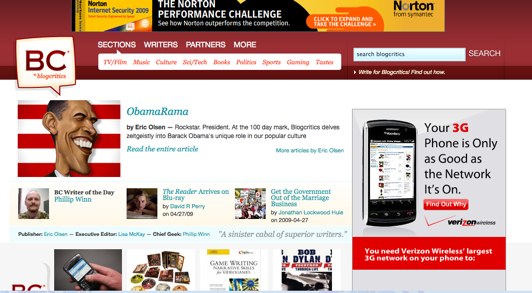 Technorati has fully redesigned Blogcritics, a seven-year old blog network that the media company acquired last August, in an effort to drive more traffic to the site. We originally wrote about Blogcritics in 2005. Blogcritics currently is a community of 3,300 writers who have published more than 84,000 articles, providing bloggers an entry point to publish their content to a more widely-visited site. The content on the site hasn’t changed much; it’s will simply be packaged in a sleeker, more user-friendly interface. Currently, the site’s design and interface is bland and features very little in terms of images. The new design, which will be rolled out at 1 AM PST tonight, features a new logo, a more colorful interface, and is well-organized. The site contains a new feature “ObamaNation," that will analyze the impact President Obama is having on pop culture. It also allows users to follow their favorite writers by listing all of the content a writer has created both on and off the Blogcritics platform. All in all, it is a big improvement in terms of the way the site looks and feels. Blogcritics, which is similar to Salon's Open Salon, draws about 1 million unique monthly visitors, according to Google Analytics. The site hasn’t increased traffic since its acquisition last summer—the site had about 1 million monthly uniques at that point as well, so this is clearly an effort to spruce up the blog community to drive more traffic. The site currently runs ads completely through Technorati’s ad network. Technorati Media has been through several acquisitions and redefining changes under CEO Richard Jalichandra, who joined the company in October 2007. Last June, the company launched Technorati Media, a blog advertising network. Prior to launching the ad network, Technorati raised $7.3 million in a fourth round of financing through Draper Fisher Jurvetson, Mobius Venture Capital and FG Incubation. Last fall, Technorati acquired AdEngage to join the company's newly formed blog advertising network. And most recently, Technorati launched a new directory of 'tag' pages, offering brief overviews of a variety of tech-related topics. Unfortunately, Technorati hasn’t been immune to layoffs during the current economic climate. A few weeks ago, the company let go 10 percent of its staff, or 4 employees, and also suffered through an earlier round of layoffs last September and also implemented pay cuts for remaining staff. But Jalichandra told us that that the blog search engine is growing and layoffs were necessary to "fine tune" its business model to eventually become profitable. Jalichandra has also said that while the timing of launching an ad network a few months before the market crashed wasn't optimal, quarterly ad revenue has grown by 6.5 times since the launch of Technorati Media last June, when presumably its revenues were negligible. Here’s a look at the old homepage: 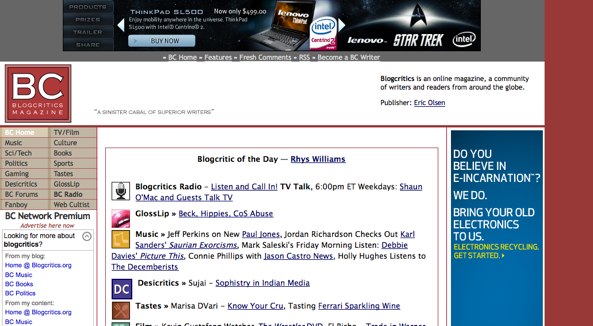 Crunch Network: CrunchBase the free database of technology companies, people, and investors |
| Live From Facebook Technology Tasting Posted: 27 Apr 2009 04:15 PM PDT I’m here at Facebook’s office in downtown Palo Alto, where the company is holding a special Technology Tasting to announce and demonstrate its latest APIs and other features it is going to begin offering developers. In the last two days we’ve heard about some of the announcements, including its decision to grant developers access to full streams - a big step for a service that has previously been quite reserved about exporting its data. And earlier today we learned about its decision to fullly embrace of OpenID, which is a huge leap forward for the initiative. I’ll be streaming the event live using Qik, during which we will be shown demos of some of the first implementations of the full Facebook streams and its integration with OpenID. Update: Facebook is using Plaxo as an example of enabling two-way flow between Facebook Connect, so you can share activity between 3rd party sites and Facebook via linking accounts. Showing Facebook desktop powered by Adobe Air. Loic Le Meur, creator of Twhirl and Seesmic Desktop, is presenting how Seesmic Desktop is integrating Twitter and Facebook together into its desktop client. He says you should be able to post video to Facebook from the Seesmic Desktop. Microsoft has also shown off a pair of very cool applications featuring its .NET and Silverlight platforms. Even more impressive: the apps were put together in 72 hours. Luke Shepard is now talking OpenID and Facebook Connect are working together. See our earlier post. The full videos (broken into three segments because the connection died a few times) are below.
Crunch Network: CrunchBase the free database of technology companies, people, and investors |
| Failing To Live Blog The MySpace Employee-Only All Hands Meeting Posted: 27 Apr 2009 04:11 PM PDT
The result? Total failure. We had to try since the meeting is being held outside. MySpace’s Los Angeles headquarters has no place for a thousand or so people to congregate, so they are holding the meeting outside in the courtyard, facing a public street. So far, so good. But security put up a fence around the courtyard and checked everyone’s badges carefully. MG tried, and tried again, but was turned away. Ever diligent, MG then tried to video the event from outside the fence. But the audio is so bad that nothing could be heard. On the upside he was kicked out by security and told he’d be arrested if he didn’t leave the property. He’s now trying to find a back way into the courtyard, and I’ve promised to bail him out if it comes to it. The full video, which contains absolutely no useful content whatsoever, is below. Next time we’re renting a helicopter. Crunch Network: CrunchBoard because it’s time for you to find a new Job2.0 |
| BrightRoll: Video Ad Rates Dropped 12 Percent In First Quarter, And The Pre-Roll Is Still King Posted: 27 Apr 2009 03:45 PM PDT
The ad rates for online video keep coming down, and that is a good thing. Video ad network BrightRoll is about to release some data from the first quarter of 2009 which shows ad rates as measured in cost-per-thousand impressions (CPMs) dropping 12 percent annually. The rate of decline is slowing from the 25 percent drop that video ad CPMs experienced during the fourth quarter of 2008. But if they fall farther that could be a good thing. In a survey of 150 advertising executives in the U.S., more than half (53 percent) expect video CPM rates to be “marginally lower” a year from now, while another 20 percent think CPMS will drop in half. Video CPMs range broadly depending on whether the ads are being sold directly by sites with large video inventories or by ad networks, but a $20 CPM is a broad industry average. These still need to come down to between $7 and $9 to roughly match what advertisers are paying for commercials on TV on average (more like $15 for primetime, and as high as $50 for niche, targeted cable channels). These declining CPMs probably have something to do with the downward revision in ad video revenue estimates that we are starting to see. The high price of online video ads is only one factor limiting its growth, however. Others include poor targeting capabilities, and a still somewhat limited reach for those mostly professionally-produced videos that companies want to place ads on. In the survey, here were the biggest limiting factors: In your view, what are the factors limiting online video advertising’s growth today? • Lack of targeting capabilities: 31% And here are the factors corporate clients are worried about. Again, targeting comes up top. Corporations don’t seem as concerned about price as ad agency executives, but overall they have roughly the same concerns. Which aspect of online video do your clients have the most significant concerns about? • Targeting capabilities: 28% But let’s get back to falling prices because it is really important to understand how that will play out. The lower the rates fall, the more comfortable advertisers are buying online video ad inventory in bulk, and if the prices come down to be more in line with television ad rates then it will be easier for them to think of TV ads and online video ads in the same vein. In fact, 71 percent of the survey respondents think of online video ads as complementary to TV ads. Like anybody else, ad executives like to feel comfortable about what they are buying. The more that online video ads look like TV ads and are priced like TV ads, the more comfortable Madison Avenue and its corporate clients will be. This rigidity partly explains why the pre-roll ad is more dominant than ever. During the first quarter, pre-rolls (video ads that appear in the player before the actual clip) accounted for 81 percent of campaign budgets, up from 63 percent a year ago. In the survey, ad executives perceived the pre-roll as delivering better response rates than other video ad units and “easier to compare it apples-to-apples to a TV: 30 spot.” They also like the fact that they can re-purpose their TV ads for the Web. In other words, they’ve learned nothing about the benefits of molding their advertising to the medium. Everyone in the advertising industry may love pre-rolls, yet very few of them have even done studies to measure their effectiveness or that of any video advertising. According to BrightRoll’s survey, 87 percent have not done any in-house research on online video effectiveness. However, 56 percent believe clients would spend more on online video advertising if they could prove its effectiveness with data. If they did conduct research, here is what they would want to find out: What areas of online video advertising do you believe need to be researched further? • Impact on offline purchase behavior: 39% Those all sound like important and reasonable things to start measuring. So what is the holdup? Crunch Network: CrunchBoard because it’s time for you to find a new Job2.0 |
| MobileCrunch Contest: Cowboys Vs. Giants. Brand New Stadium. You And A Friend? Posted: 27 Apr 2009 02:45 PM PDT
We tend to give away a whole lot of stuff on the TechCrunch network. Phones, DVDs, laptops, TVs - you name it, we’ve probably given it away at some point. That said, I think this is the first time we’ve given away sports tickets. FuzzyCube Software, the folks behind the iPhone game iQuarterback, just dropped us a pair of tickets to the Dallas Cowboys vs New York Giants game coming up in September. This game is going to be one to remember; not only is it a face-off between rivals, but its also the first game the Cowboys will be playing in their brand new stadium. Even with a few months to go before the big day, these tickets are already going for 200 bucks a pop. Want them? Find out how to win after the jump. Read the rest at MobileCrunch >> Crunch Network: CrunchBoard because it’s time for you to find a new Job2.0 |
| Feed Me: Xobni Going Live With Full Facebook Stream Tonight Posted: 27 Apr 2009 02:00 PM PDT With the news that Facebook is going to begin allowing developers to incorporate full streams into their applications, developers are scrambling to get their apps up to speed. This morning we got our first look at the upcoming new version of Seesmic Desktop, and now we’ve learned that Xobni, the popular Outlook plugin that helps make Email easier to manage, will be going live with a new upgrade beginning at 6 PM tonight. Because of the way Xobni is built users won’t have to download an upgrade either - all changes will be server side. Up until now Xobni has included some basic Facebook contact information, including profile photos and status updates, but it wasn’t as comprehensive as your full Facebook news feed (you couldn’t see how your contacts were interacting with each other, for example). Now you’ll be able to see this information at a glance directly from your Outlook mail client, which is obviously far more efficient than having to manually check your Facebook page. Unfortunately, Xobni is still available only on Windows machines, so Mac users are left in the dust.
Crunch Network: MobileCrunch Mobile Gadgets and Applications, Delivered Daily. |
| Facebook First Big Site To Really Embrace OpenID Posted: 27 Apr 2009 01:30 PM PDT
Let me take a step back. OpenID is a distributed single sign on solution that allows people to sign into different services with the same login credentials. There are two ways companies/websites can participate in the OpenID framework - as "issuing parties" or as "relying parties." Issuing parties make their user accounts OpenID compatible. Relying parties are websites that allow users to sign into their sites with credentials from Issuing parties. Of course, sites can also be both. In fact, if they aren't both it can be confusing and isn't a good user experience. All the big guys are now Issuing Parties, which allow their users logging in all over the Internet with those credentials. But none of them accept IDs from anywhere else, so anyone that uses their services has to create new credentials with them. It's all gain, no pain. There are two exceptions - AOL Mapquest and Google’s Blogger - but for the most part the big guys are issuers, not relying parties. And that has led us in the past to accuse them of exploiting OpenID for their own benefit without giving back to the community. See our post Is OpenID Being Exploited By The Big Internet Companies? Facebook has been a wild card with OpenID. They’ve talked about adopting it eventually, but their Facebook Connect product has actually muddled the situation - Facebook actually competes directly with OpenID when allowing users to sign in to third party sites via Facebook Connect. Now that’s going to change, and we’ll soon see users have the ability to sign in to Facebook using, say, their MySpace credentials if they choose to. I like the thought of that. But it still may be a while before we see the other major players take similar steps. Facebook has never really had notion of a user ID - you’ve always logged in with your Email address, which could have come from any number of other services, so Facebook isn’t really sacrificing much here. Instead of a user name, Facebook members are assigned a meaningless user ID number (though they’re experimenting with vanity pages). Contrast that with Yahoo and Google, both of which have built up their own login systems, which can be used across multiple services using a single persistent account name. Users benefit because they can seamlessly jump between services, and Yahoo and Google get their users to stay within their own suite of products. There’s a good chance they’re not going to give that up so readily. Crunch Network: CrunchBoard because it’s time for you to find a new Job2.0 |
| Tweetname Lets You Find And Purchase Domain Names Via Twitter. Oh, Pud. Posted: 27 Apr 2009 01:17 PM PDT
Finding and registering an available domain name just became even easier. Now you can do it via Twitter thanks to Tweetname. Founder Philip Kaplan (aka “Pud,” the former CEO of AdBrite) argues that Tweetname makes domain purchasing much simpler than going through other domain registrars like GoDaddy, which requires you to actually go its site. In truth, it is not that complicated but Tweetname aims to make domain registering Tweet-simple. You set it up once and then it does all the work for you. Once you log into Tweetname for the first time, the site uses OAuth to connect to your Twitter account. You fill out your credentials, including name, address, credit card info, billing info and then Tweetname automatically follows you and arranges for you to follow Tweetname. After this is set up, you can Tweet a potential domain name via a direct message to Tweetname, and Tweetname within seconds will let you know if it is available (”Success!”) or not (”D’oh”), and will purchase and register the domain for you. Domains, which can be registered under .com .net .org .us .name .biz .info, cost $14.95. You then get an email with all the information about where you can manage the domain. Tweetname provides users a free interface where they can manage their domains, set up email addresses, set up url forwarding, and so on. UPDATE: Kaplan tells us that after seeing the comments on this post, he has dropped the price of the domains to $11.95 per year. Here’s a instructional video that shows how Tweetname works: Crunch Network: CrunchBase the free database of technology companies, people, and investors |
| Google’s Schmidt and Microsoft’s Mundie Appointed As Obama Tech Advisors Posted: 27 Apr 2009 10:41 AM PDT
Eric Schmidt, Google’s CEO, and Craig Mundie, Microsoft’s chief research and strategy officer, have been named to President’s Obama’s Council of Advisors on Science and Technology (PCAST). According to a statement released by the White House, PCAST is an advisory group of the the country’s foremost scientists and engineers who will help the President and Vice President form policy related to science, technology, and innovation. The council includes a who’s who in the science and technology fields, with leaders in climate change, medicine, physics, chemistry, and computer science all holding positions on the council. The group is co-chaired by John Holdren, Director of the White House Office of Science and Technology Policy; Eric Lander, Director of the Broad Institute of MIT and Harvard and one of the principal leaders of the Human Genome Project; and Harold Varmus, President and CEO of Memorial Sloan-Kettering Cancer Center, former head of the National Institutes of Health and a Nobel laureate. Members of the council include Christopher Chyba, an expert on the threats of biological warfare and nuclear proliferation; Chad Mirkin, a noted nanotech researcher; and David Shaw, founder of D.E. Shaw & Co. and a computational biochemistry expert. PCAST was originally established by President George H. W. Bush in 1990. President Obama recently named Aneesh Chopra as chief technology officer, a position that was widely speculated to go to a Silicon Valley technologist. Steve Ballmer, Jeff Bezos, Bill Gates, and Eric Schmidt (among many others) were named as possible candidates. Last fall, Beet.TV sat down with Mundie for an interview. Here’s the video: Crunch Network: CrunchBoard because it’s time for you to find a new Job2.0 |
| Facebook Opens Up Its Stream API To Developers. Let The Conversation Wars Begin! Posted: 27 Apr 2009 09:05 AM PDT
As we speculated this weekend, Facebook has opened up its activity stream through a new API for developers. Now any developer can create new applications incorporating the real-time stream. One of the first apps to take advantage of this new API is Seesmic Desktop, A Twitter client which is now adding your Facebook feed through this API (something Tweetdeck already did in the past through other more restrictive means). Facebook has also created its own desktop notification client to demonstrate what can be built with the API. I just got off the phone with Ethan Beard, Facebook’s director of platform marketing, who tells me that the entire feed will be available through a single API call. A developer could recreate the entire Facebook home page if he wanted to or take parts of the feed and remix it to make something more interesting. For starters, I’d expect most Twitter clients to add the Facebook stream as an additional option. On Tweetdeck, for instance, you can read your activity stream, but you cannot respond in-line. The new Facebook Open Stream API is two-way, so it would allow developers to build apps which allow for that two-way communication inside the app. This is a big deal. It potentially puts Facebook side by side with Twitter in all of these desktop and mobile client applications where a lot of the real-time conversation is happening and lets it compete head-to-head with Twitter. Whichever conversation stream is more interesting will prevail. But beyond the arms race with Twitter, the stream API will open up the possibility for many new applications both within Facebook and outside its walls. An obvious one would be better filtering options for your activity stream. It would be simple to create an app that shows you the most liked or most commented on items in your stream, for example. Or now that stream can be plugged into various social search engines to give you socialized real-time results. Hell, if I could just search my own activity stream, I’d consider that a giant leap forward. But Facebook still only allows developers to cache data for 24 hours, so you wouldn’t be able to build a very powerful search engine or return results from more than a day ago. Crunch Network: CrunchGear drool over the sexiest new gadgets and hardware. |
| You are subscribed to email updates from TechCrunch To stop receiving these emails, you may unsubscribe now. | Email delivery powered by Google |
| Inbox too full? | |
| If you prefer to unsubscribe via postal mail, write to: TechCrunch, c/o Google, 20 W Kinzie, Chicago IL USA 60610 | |

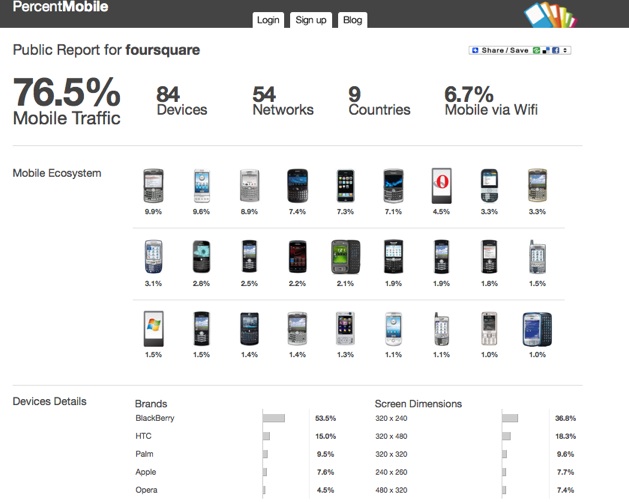

 We haven’t actually seen the details of it since a first look was given exclusively to the
We haven’t actually seen the details of it since a first look was given exclusively to the 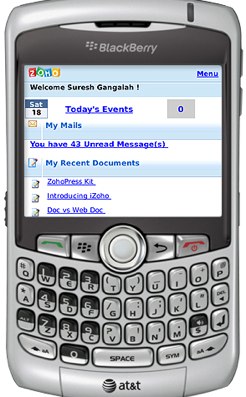
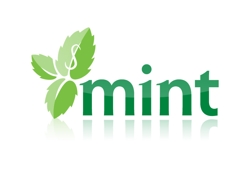


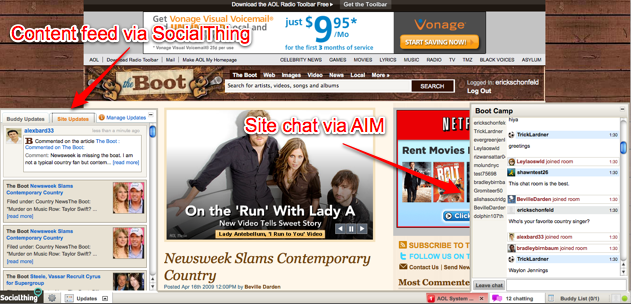


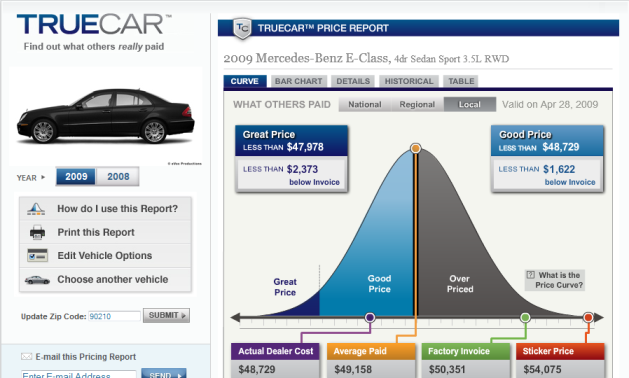
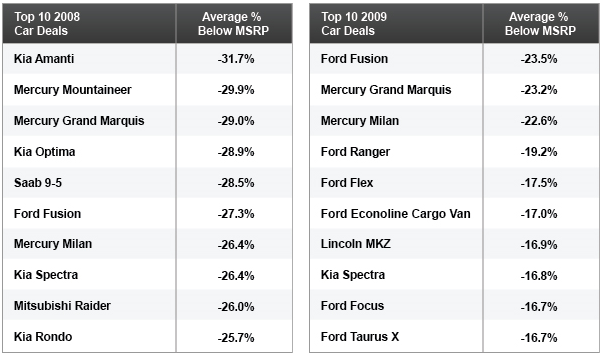
 K-I-S-S: Keep It Simple, Stupid. It's a mantra that always pops into my head when I'm looking at new startups. A lot of them seem to want to do a million different things because other companies have been successful at one of those things in the past. But that's a bad idea. Way too many new products and services are too complicated. And I would suggest, often fail as a direct result of that.
K-I-S-S: Keep It Simple, Stupid. It's a mantra that always pops into my head when I'm looking at new startups. A lot of them seem to want to do a million different things because other companies have been successful at one of those things in the past. But that's a bad idea. Way too many new products and services are too complicated. And I would suggest, often fail as a direct result of that. On a much larger scale, I'd argue that it's the same trap Windows falls into. Microsoft simply cannot fundamentally change it too much — even though plenty of people would argue that it probably should — because people would go wild. We saw this happen a bit with some core changes in Vista — though, to be fair, Vista's performance I think hurt it more than anything else.
On a much larger scale, I'd argue that it's the same trap Windows falls into. Microsoft simply cannot fundamentally change it too much — even though plenty of people would argue that it probably should — because people would go wild. We saw this happen a bit with some core changes in Vista — though, to be fair, Vista's performance I think hurt it more than anything else.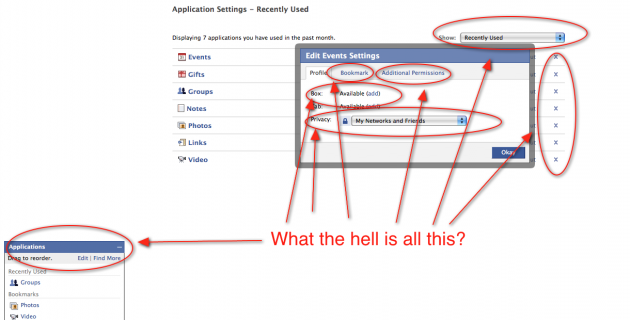

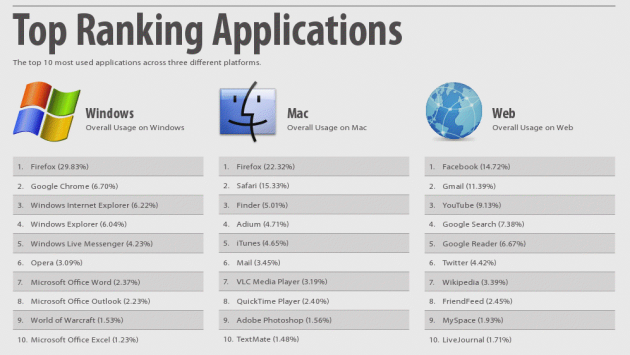
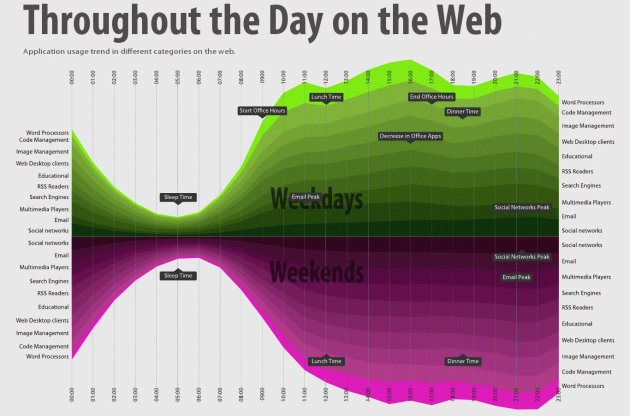
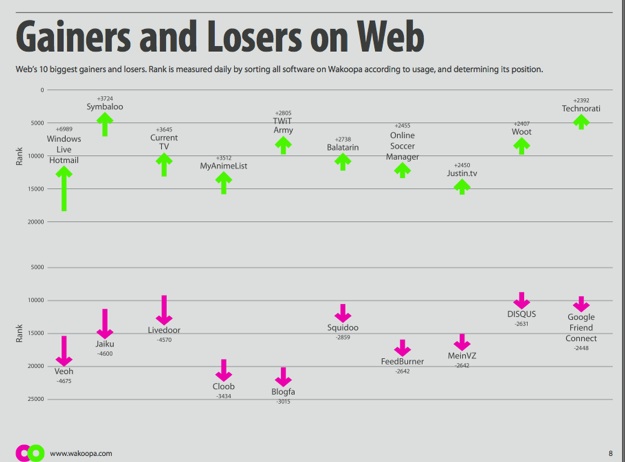

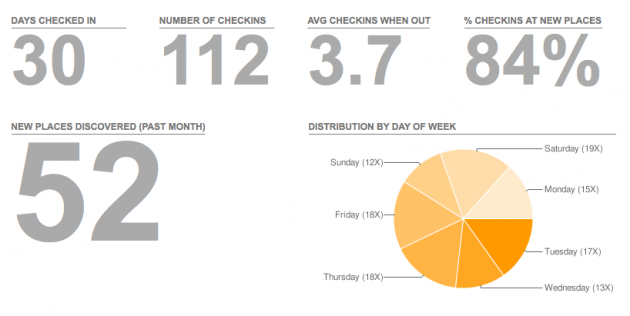



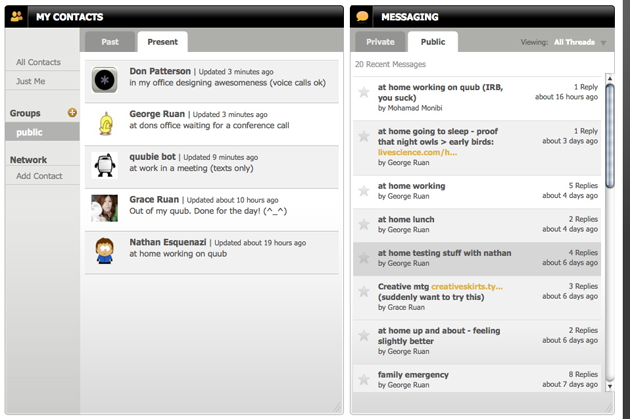
 Microsoft is launching a new product into private beta on Tuesday morning with the aim of keeping friends and family in touch during emergencies. The idea for product, called
Microsoft is launching a new product into private beta on Tuesday morning with the aim of keeping friends and family in touch during emergencies. The idea for product, called  Users can also post more lengthy reports which are sent to the dashboards of those you share it with. There are four types of reports at launch: check in safe and well, report upcoming plans, report a situation or general information.
Users can also post more lengthy reports which are sent to the dashboards of those you share it with. There are four types of reports at launch: check in safe and well, report upcoming plans, report a situation or general information.




 Our own MG Siegler is attempting to shoot live video of the ongoing MySpace all hands meeting where the
Our own MG Siegler is attempting to shoot live video of the ongoing MySpace all hands meeting where the 

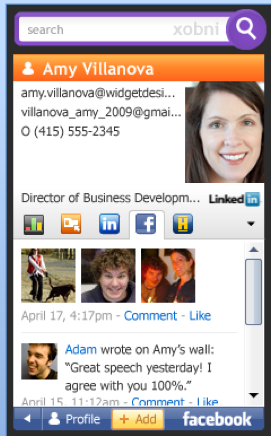
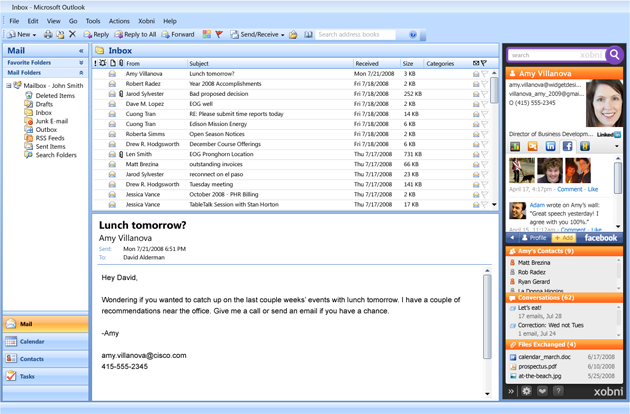
 Apparently it’s embrace the developer community day at Facebook. In
Apparently it’s embrace the developer community day at Facebook. In 


No comments:
Post a Comment